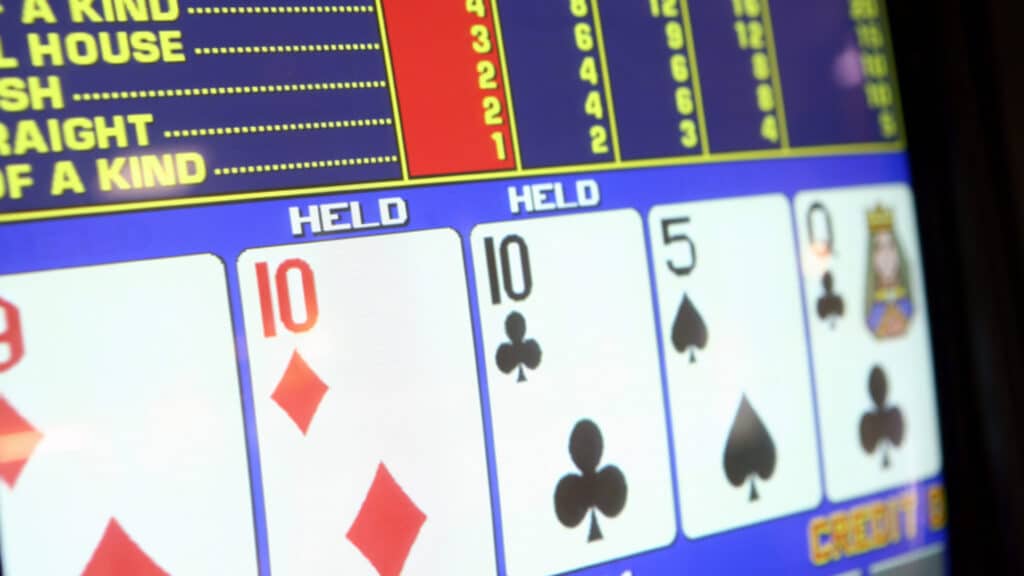Online video poker has long been a favorite among casino enthusiasts, blending the excitement of poker with the fast-paced action of slot machines. With its simple rules and high potential for profit, it offers a unique opportunity for both new and advanced players to sharpen their skills and try their luck. One strategy that many experienced players use to maximize their earnings is multi-tabling — the practice of playing multiple video poker games simultaneously.
In this guide, we'll explore effective multi-tabling strategies, how to optimize your gameplay, and the tools and techniques that can help you succeed when playing multiple video poker tables. Whether you're a beginner or an advanced player looking to step up your game, this article provides everything you need to know about multi-tabling in online video poker.
What is Multi-Tabling in Online Video Poker?
Multi-tabling refers to the practice of playing more than one video poker game at the same time. Online casinos make this strategy possible by allowing players to open multiple game windows or tabs, enabling them to play multiple hands of video poker concurrently. While multi-tabling is often associated with games like blackjack or poker, it is also a useful strategy in video poker, especially when you want to increase the volume of hands played.
The goal of multi-tabling is to maximize your potential earnings by increasing the number of hands you play. More hands equal more chances to hit a winning combination or a big payout, which can significantly improve your overall return on investment (ROI). For advanced players, multi-tabling can be an essential tool for boosting profits, provided you know how to manage your focus and bankroll effectively.
Why Should You Consider Multi-Tabling in Video Poker?
Multi-tabling has several advantages, but it’s not without its challenges. Understanding both the pros and cons of multi-tabling is essential before you dive in. Here are some reasons why players opt for multi-tabling in video poker:
1. Increased Opportunities for Wins
The most obvious reason to multi-table is the increased number of hands you’ll be playing. More hands mean more chances to hit winning hands and receive payouts. For example, if you play 10 hands at once, you have 10 times the opportunity to win on each round of video poker compared to just playing one hand at a time.
2. Higher Potential for Comp Points and Bonuses
Many online casinos offer players comp points for each hand they play. By multi-tabling, you can earn these comp points much faster, which can later be redeemed for bonuses, free play, or other rewards. This helps players leverage the casino’s loyalty program to boost their overall bankroll.
3. Maximize Bankroll Management
Multi-tabling can also be a strategy for bankroll management. If you have a small bankroll but want to maximize your chances of winning, multi-tabling can help you make the most of your funds. By playing at lower stakes and opening more tables, you can play more hands without risking too much on any single game.
Challenges of Multi-Tabling in Video Poker
While multi-tabling offers numerous advantages, it also comes with its own set of challenges. Here are a few things to consider before diving in:
1. Reduced Focus and Mental Fatigue
Managing multiple video poker games at once can be mentally taxing. The more tables you open, the more challenging it becomes to track the cards, make quick decisions, and spot patterns. Mental fatigue can lead to mistakes, and when you’re playing multiple games at once, those mistakes can be compounded. It’s crucial to practice staying focused and managing your time effectively when multi-tabling.
2. Increased Risk of Overwhelming Yourself
Another challenge of multi-tabling is the risk of overwhelming yourself. If you’re playing too many games simultaneously, it becomes difficult to keep up with the action and manage your bets. This can cause you to miss opportunities or make poor decisions. Starting with just a few games at a time and gradually increasing the number of tables you play on can help mitigate this risk.
3. Managing Bankroll Across Multiple Tables
Multi-tabling can complicate bankroll management, especially when you’re dealing with different stake levels across tables. Balancing your bankroll effectively and ensuring you don’t overspend on any one hand is crucial to success. Without careful monitoring, you could find yourself running low on funds before you’ve maximized your chances to win.
How to Effectively Multi-Table in Online Video Poker
To be successful at multi-tabling in video poker, you need to follow a strategic approach. Here are the steps to take to ensure you can manage multiple tables efficiently and maximize your results:
1. Start Slow and Gradually Increase the Number of Tables
If you’re new to multi-tabling, don’t dive in with too many tables at once. Start with two or three tables and focus on managing them effectively. As you become more comfortable with the process, you can slowly increase the number of tables you play. Advanced players often handle five or more tables, but this is only possible if you’ve built the necessary skills and mental focus.
2. Choose Games with Similar Paytables
When you multi-table in video poker, it’s crucial to choose games with similar paytables. This allows you to develop a consistent strategy across all tables, making it easier to manage the action. For example, if you’re playing five video poker games with different paytables, you may struggle to remember the optimal strategy for each one. Sticking to games that follow similar payout structures reduces the mental load and helps you make faster decisions.
3. Use an Efficient Video Poker Strategy
Having a solid video poker strategy is essential when multi-tabling. While it’s possible to implement basic strategy without much effort, playing multiple hands at once demands even greater attention to detail. To improve your strategy, use a video poker strategy chart that tells you the best move for any given hand. This reduces the time you spend thinking about each decision and increases the number of hands you can play per hour.
4. Manage Your Bankroll Wisely
Effective bankroll management is key to successful multi-tabling. With multiple tables running simultaneously, it’s easy to lose track of your bankroll if you're not paying attention. Before you start multi-tabling, set limits on how much you are willing to risk per session and stick to that limit. Divide your bankroll into smaller portions and only use a fraction on each table, ensuring you have enough funds for all games without risking your entire bankroll on one table.
5. Use Auto-Hold Features for Faster Play
Many online video poker machines offer an “auto-hold” feature, which automatically holds the best cards based on the paytable and strategy. This feature speeds up decision-making and allows you to focus on multiple games at once. It’s a great tool for beginners and intermediate players looking to speed up their play and reduce mental fatigue when multi-tabling.
6. Pay Attention to Timing
Effective timing is crucial when playing multiple video poker games. The faster you make decisions, the more hands you can play. But don’t rush to the point where it negatively impacts your decisions. Practice making decisions quickly, but thoughtfully, to improve your efficiency at the tables. Playing a balanced pace across all tables will ensure you don’t miss any opportunities or make costly mistakes.
Advanced Tips for Multi-Tabling in Video Poker
For experienced players who want to take their multi-tabling skills to the next level, here are some advanced tips:
1. Track Your Stats and Analyze Performance
Advanced players often use tracking software to monitor their performance across multiple tables. These tools can help you track your win rate, average hand duration, and return on investment. Analyzing these statistics allows you to make adjustments to your strategy and optimize your approach to multi-tabling. Tracking your performance across different stake levels and paytables will help you identify areas for improvement.
2. Use Multiple Devices or Screens
Multi-tablers who are serious about maximizing their profits often use multiple screens or devices to manage their gameplay. This setup allows you to keep track of all your tables at once without feeling overwhelmed. It also gives you the flexibility to focus on each game individually while still maintaining oversight of the other hands in play.
3. Take Breaks and Avoid Fatigue
Advanced players know that multi-tabling for extended periods can lead to fatigue, which in turn can impact decision-making. Taking regular breaks ensures you remain fresh and focused, helping you avoid costly mistakes. Setting time limits on your sessions and stepping away for short breaks will help you maintain high levels of concentration over long periods of play.
Conclusion: Mastering Multi-Tabling in Online Video Poker
Multi-tabling in online video poker can be a highly effective strategy for increasing your chances of winning and maximizing your overall profits. By starting slow, using efficient strategies, managing your bankroll, and taking advantage of modern tools, you can successfully navigate multiple tables and enhance your gaming experience. Whether you’re just getting started with multi-tabling or you're an experienced player looking to fine-tune your skills, the tips outlined in this article will provide a solid foundation for mastering multi-tabling in video poker.
Remember, while multi-tabling can increase your potential earnings, it also requires focus, patience, and discipline. As you gain experience and refine your skills, you’ll become more adept at handling multiple games simultaneously, giving you an edge in the competitive world of online video poker.



